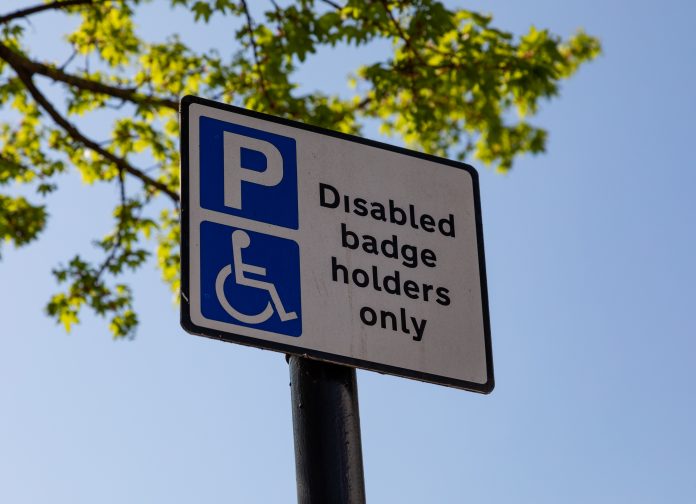Here, Paul Tomlinson, Managing Director at IEG4, discusses the new digital Blue Badge service and the challenges that it poses to councils, especially following the addition of hidden disabilities into the scheme
The Government’s new Blue Badge service has brought a much-needed change in capability to the previous scheme which was the Department of Transport’s (DfT) service that received the most complaints.
For councils that are happy to continue with manual processes and Excel spreadsheets to manage their associated processes, the new service will be good enough. But, will it be good enough to cope with the increased number of applicants following the recent changes in opening up Blue Badge allocation to those with hidden disabilities?
For the citizen, 65% (a number that is rising) of whom submit a Blue Badge application form online, the centralised application system can quickly turn into a black hole. Applicants have little visibility on the status of their application, while councils get no support to drive and manage their Blue Badge assessment activities. In other words, the links between the end-customer, council worker, assessment activity progress and the central system, are not there.
Without the necessary ‘plumbing’, the digital service will underperform for everyone. Local authorities need to act fast to ensure they can manage and process applications as efficiently as possible to deliver the best customer experience.
Councils expect flexibility
Unlike other areas within the public sector, the Blue Badge service does not follow a standardised national framework for applicant assessment. As a result, assessment activities vary from council to council. Once the application is made centrally, without a well-designed local solution, it can fall through recording gaps. In addition, customers are sometimes unable to see the progress of their digital application and, as a result, contact their local council for updates. Staff time is diverted from processing applications to following up on requests about application status, which results in a high cost of completing the process per application and poor customer service.
But how can councils address this problem and balance the lack of standardisation with their need for flexibility in designing and processing applications?
Simplify with no code and Local Government-as-a-Platform (LGaaP)
A ‘low code’ approach can provide a lot of flexibility for local government. However, to benefit from this approach, organisations need to have the technical resource to build and maintain these solutions. Given the overstretched public finances, the availability of skilled IT talent is a key challenge for local government. As time passes, councils are left with a solution which does what it did when it was designed, but not necessarily what it needs to do to evolve.
This can be addressed by removing the technical hurdle of ‘low code’ to help councils become self-sufficient through using a solution that is ‘no code’. This way, non-technical users can adapt workflows and assessments, without reliance on IT experts. To take it even further, an LGaaP approach enables local authorities to create and share ‘apps’ with other organisations. This means they can benefit from what already exists, for example, another council’s library of forms, which will mean savings on the cost and time needed to develop these from scratch.
Take a customer experience-first approach
Customers expect a seamless digital experience across all their interactions. It is therefore important to understand the customer journey and keep the customer informed about progress at each key stage.
By synchronising activities across different solution components (central government, a local council and a self-serve portal), the Blue Badge applicant is able to:
- Make the first application using GOV.UK and receive a case reference
- Receive acknowledgement and confirmation that their local council has picked up the application
- Login to the self-serve portal using case reference, surname and postcode
- Be informed about progress, next steps and expected service levels through real-time and template driven notifications that are sent via the GOV.UK NOTIFY service
- Be asked for and upload further information to support the application
- Be given links to further questions depending on the case
- Make payment using GOV.UK Pay, called from the central or self-serve portal
- Be advised of the need for, and details of, further assessments
- Check on-going status and receive confirmation of Blue Badge eligibility at the end of the process
Co-ordinate council activities through case management
As each stage within a Blue Badge application is completed, progress on the applicant’s case is updated. Expectations are communicated to the applicant, notifying the timing of each step and, depending on an applicant’s communication choice, councils can send updates via email or SMS, or, if necessary, via non-digital methods.
At the back-office, effective workflow allocates tasks to individuals and information supporting the application is stored digitally under each case, thereby reducing paper handling costs and delays. With all information visible in one place, decisions can be made faster and with greater efficiency and consistency.
When an application is deemed eligible by local processing with all required evidence, the local council system communicates with the central government system to authorise the central production and dispatch of the Blue Badge.
Make sure the ‘plumbing’ is right
The new digital Blue Badge service is a good example of a public sector area where digitisation has the potential to change the front and back-office systems, thereby increasing efficiencies. For this to happen, and for the best customer experience to be delivered, councils need to ensure they ‘fix the plumbing’ between the different systems – central, local and citizen – and ensure key information is available and accessible where and when it is needed.





![Europe’s housing crisis: A fundamental social right under pressure Run-down appartment building in southeast Europe set before a moody evening sky. High dynamic range photo. Please see my related collections... [url=search/lightbox/7431206][img]http://i161.photobucket.com/albums/t218/dave9296/Lightbox_Vetta.jpg[/img][/url]](https://www.openaccessgovernment.org/wp-content/uploads/2025/04/iStock-108309610-218x150.jpg)





